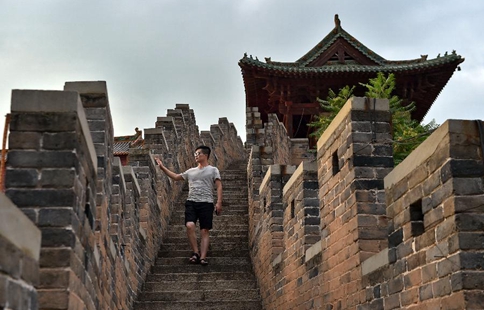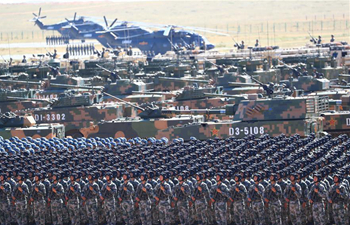BEIJING, Aug. 7 (Xinhua) -- China's central bank drained 60 billion yuan (8.9 billion U.S. dollars) from the financial system through open market operations Monday, with the volume of maturing securities exceeding new injections.
The People's Bank of China (PBOC) pumped 250 billion yuan into the market through reverse repos, while 310 billion yuan of securities matured Monday, leading to a net withdrawal of 60 billion yuan.
The operations included 130 billion yuan of seven-day reverse repos priced to yield 2.45 percent, and 120 billion yuan of 14-day reverse repos with a yield of 2.6 percent.
It was the third consecutive working day with liquidity drains in the financial system.
Analysts attributed the move to alleviated pressure on fund supply in the money market.
In Monday's interbank market, the overnight Shanghai Interbank Offered Rate, which measures the cost at which banks lend to one another, dropped 8.6 basis points to 2.721 percent.
The central bank will likely continue to drain funds from the financial system this week as liquidity conditions improve, China Securities said in an analysis note.
However, it said fund demand could rise this month as a large amount of negotiable certificates of deposit, a kind of savings instrument issued by banks, are due to mature in August.
Another 470 billion yuan of reverse repos will mature this week, according to financial information provider Wind Info.
The PBOC's open market operations are closely watched by the market, as they are a major tool for the central bank to manage liquidity.
Over the past year, the bank has steered clear of interest rate cuts and avoided tinkering with reserve requirement ratios, while adopting an expanded range of tools, such as reverse repos and lending facilities, for more nimble maneuvering.
The change came as authorities have to juggle the task of financial deleveraging, which is aimed at defusing risk and curbing asset bubbles, while shoring up a slowing economy.
China's monetary policy is set to be prudent and neutral in 2017, keeping appropriate liquidity levels and avoiding large injections.

















